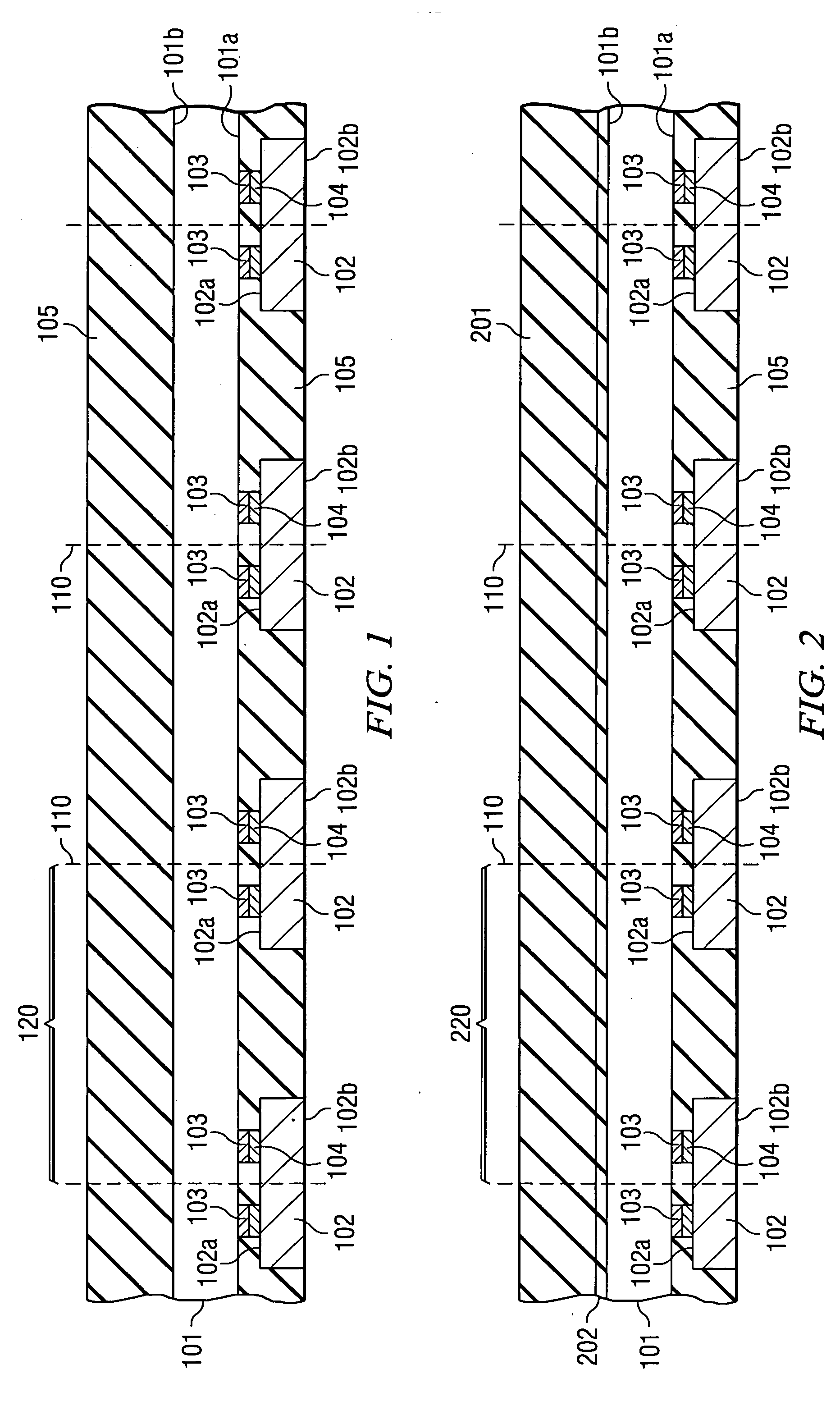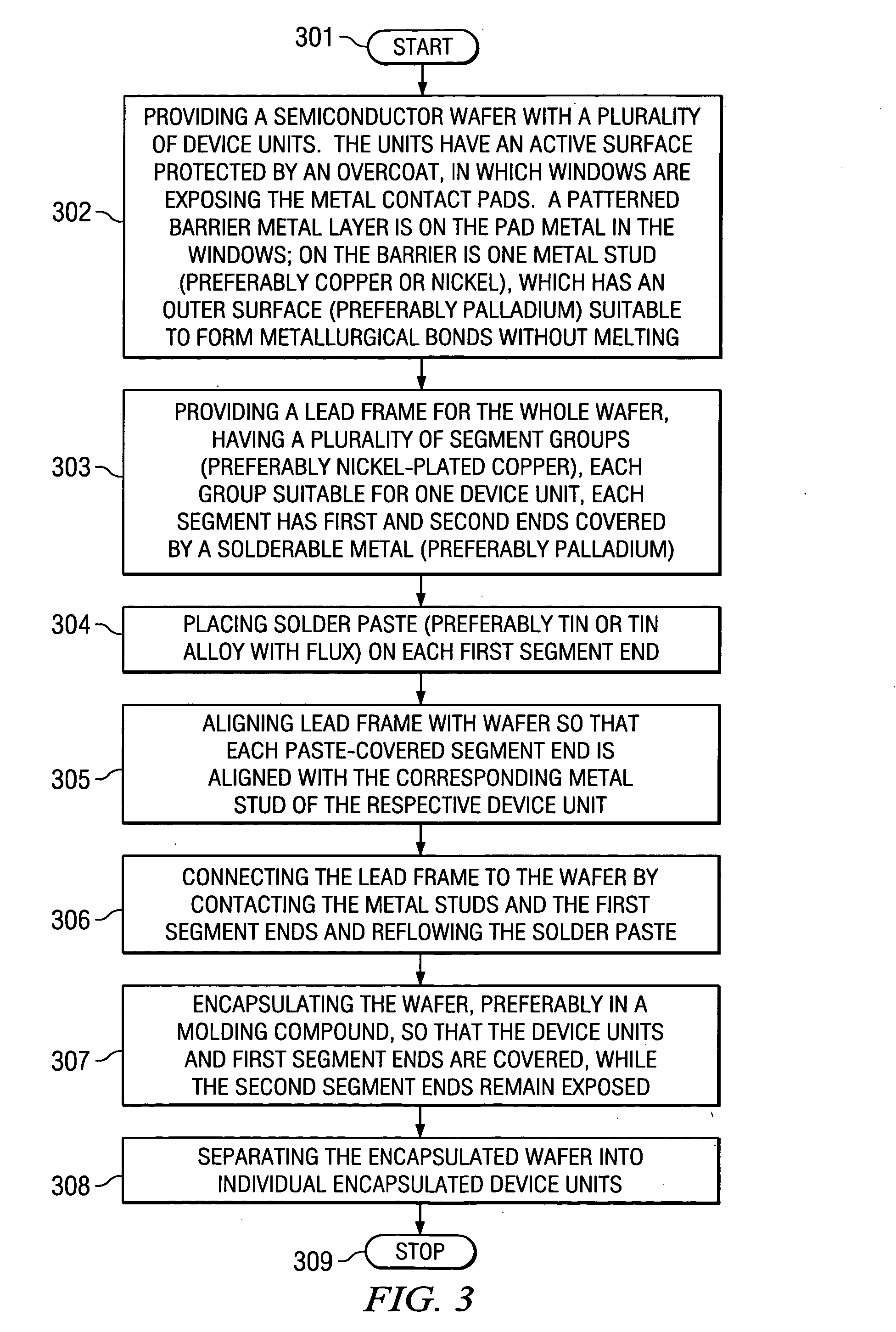Wafer-level assembly method for chip-size devices having flipped chips
a chip-size, leadless technology, applied in semiconductor devices, semiconductor/solid-state device details, electrical equipment, etc., can solve the problems of large capital cost, unfriendly environment, and high cost of wire bonding assembly, so as to improve the reliability of the device, reduce manufacturing cost, and improve the thermal performance of the package
- Summary
- Abstract
- Description
- Claims
- Application Information
AI Technical Summary
Benefits of technology
Problems solved by technology
Method used
Image
Examples
Embodiment Construction
[0025] The present invention is related to U.S. patent Applications No. 10 / 001,302, filed on Oct. 01, 2001 (Zuniga-Ortiz et al., “Bumpless Wafer Scale Device and Board Assembly”); No. 10 / 057,138, filed on Jan. 25, 2002 (Zuniga-Ortiz et al., “Flip-Chip without Bumps and Polymer for Board Assembly”); No. 10 / 678,709, filed on Oct. 3, 2003 (Bojkov et al., “Sealing and Protecting Integrated Circuit Bonding Pads”); and No. 10 / 689,386, filed on Oct. 20, 2003 (Bojkov et al., “Direct Bumping on Integrated Circuit Contacts Enabled by Metal-to-Insulator Adhesion”).
[0026] The schematic cross section of FIG. 1 shows an embodiment of the invention. A semiconductor wafer 101 with an active surface 101a is assembled on a leadframe, which has a plurality of leadframe segments 102. The assembly is performed by means of attaching the plurality of contact studs 103 (more detail below) of the active wafer surface with solder paste 104. An encapsulation material (preferably a molding compound) 105 cover...
PUM
 Login to View More
Login to View More Abstract
Description
Claims
Application Information
 Login to View More
Login to View More - R&D
- Intellectual Property
- Life Sciences
- Materials
- Tech Scout
- Unparalleled Data Quality
- Higher Quality Content
- 60% Fewer Hallucinations
Browse by: Latest US Patents, China's latest patents, Technical Efficacy Thesaurus, Application Domain, Technology Topic, Popular Technical Reports.
© 2025 PatSnap. All rights reserved.Legal|Privacy policy|Modern Slavery Act Transparency Statement|Sitemap|About US| Contact US: help@patsnap.com



